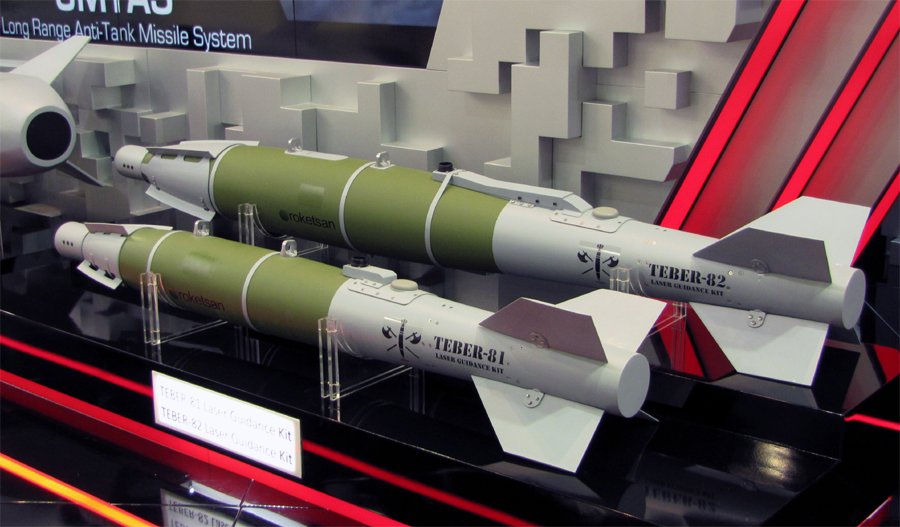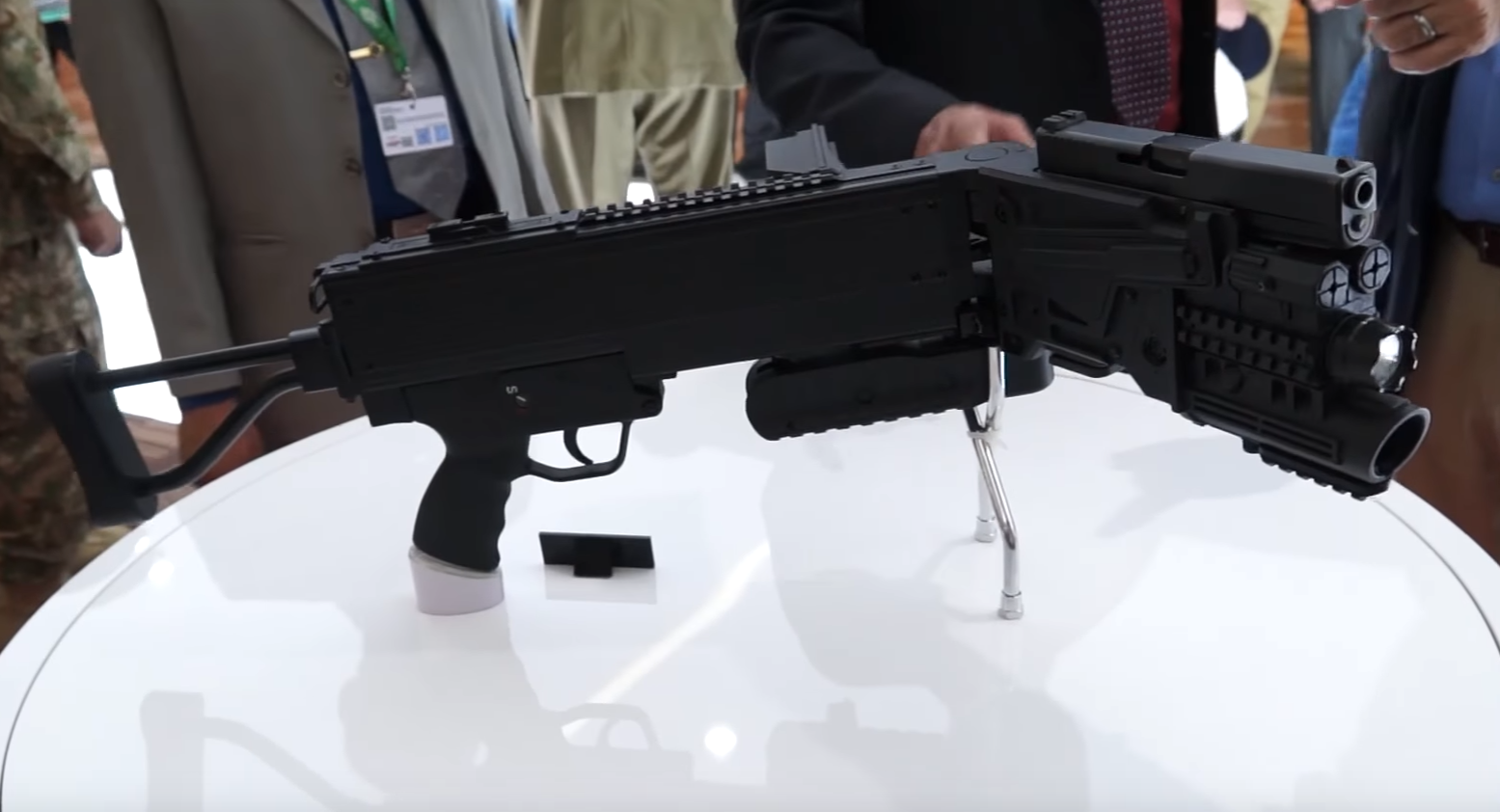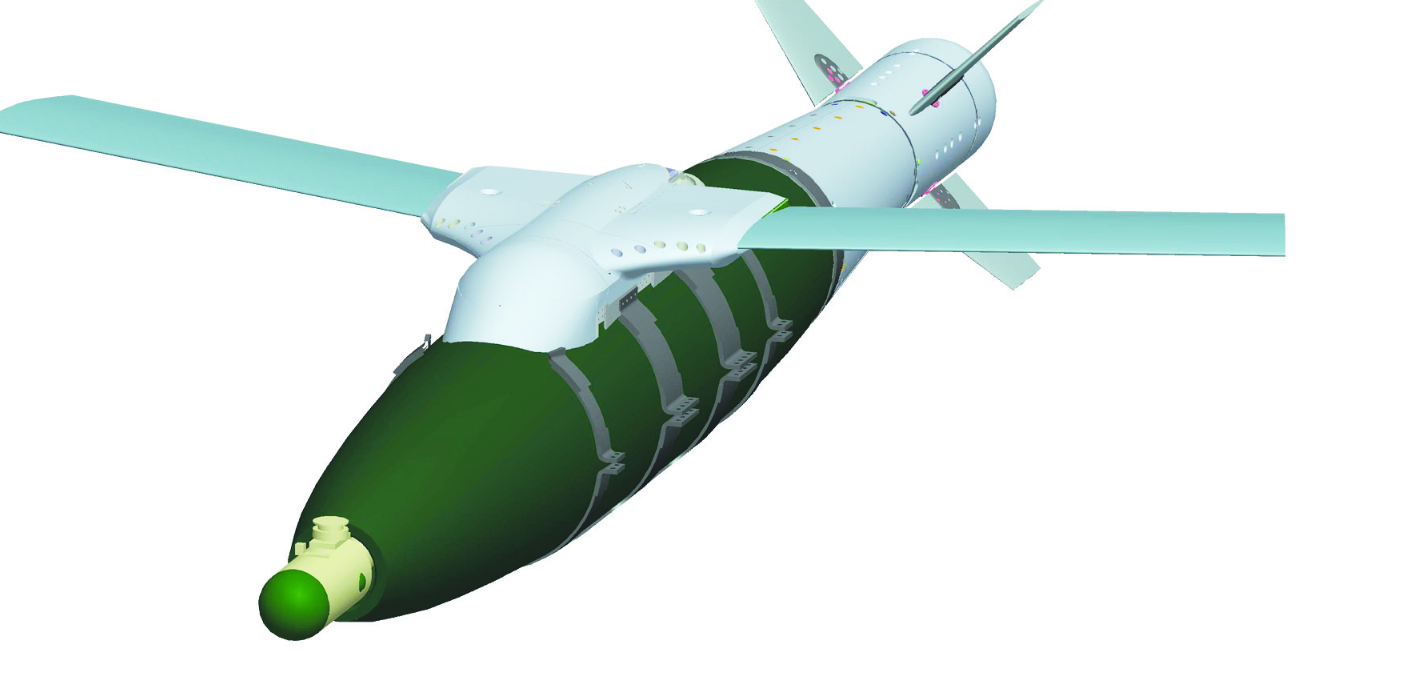2872Views 5Comments

Could Pakistan switch to “Dual Mode” guided bombs?
Lockheed Martin’s new Paveway Dual Mode Plus and Roketsan Teber could mark an industry shift in laser-guided bombs (LGB), especially in close air support (CAS) combat scenarios.
The Teber and Paveway Dual Mode Plus are LGBs augmented with satellite-aided (GPS) inertial navigation systems (INS). In effect, the Paveway Dual Mode Plus and Teber should readily function as LGBs and precision-guided bombs (PGB), depending on how the end-user utilizes the munition.
For example, if the user is targeting moving armoured vehicles, they will utilize the Paveway/Teber’s semi-active laser homing (SALH) seeker, which is used in conjunction with a targeting pod or secondary laser designator. If the target shifts to a fixed installation, such as an armoury or ammunition dump, location data can be fed into the LGB, which would then switch to INS/GPS. A detailed discussion on the topic can be found on an earlier article on Quwa. Like its predecessors, the Paveway Dual Mode Plus is a kit for converting Mk-80 series general purpose bombs (GPB) into LGBs.
The Pakistan Air Force (PAF) utilizes LGBs in its counterinsurgency (COIN) operations, primarily from its F-16C/D and Mid-Life Update (MLU) units. It is also apparently looking to deploy the JF-17 into these attack operations as well. The PAF is currently in the process of integrating the Aselsan ASELPOD to the Thunder, which will enable the fighter to use LGBs without the support of an external laser-designator source.
For the PAF (as well as other air arms), the added cost of a ‘dual-mode’ LGB over the cost of maintaining LGB and INS/GPS PGB stocks will be a primary consideration. Based on Lockheed Martin’s marketing, the Paveway Dual Mode Plus is being positioned as a natural successor to the existing Paveway laser-only kits.
At this stage, the cost of SALH and INS/GPS guidance systems has been scaled across tens of thousands of units, and the added cost would come from integrating both onto the same kit (for converting a GPB to a LGB/PGB). If the added cost is marginal or non-existent, then one should expect the PAF to replace used Paveway LGB stocks with Paveway Dual Mode Plus. In fact, according to Lockheed Martin, the Paveway Dual Mode Plus is compatible with a user’s existing Paveway II and JDAM logistical bases.
With the PAF configuring the JF-17 with the ASELPOD, the Roketsan Teber – compatible with Mk-81 (119 kg) and Mk-82 (227 kg) – could be a real option. The Teber functions along the same lines as the Paveway Dual Mode Plus – i.e. it is a LGB augmented with INS/GPS. Alternatively, China could produce an analogous solution, but based on its BeiDou Navigation Satellite System.
The PAF is not short of options in terms of ‘dual-mode’ munitions. The main question is whether a singular guided bomb kit is more optimal and cost-effective than maintaining two stocks. Besides the unit cost of the dual mode LGB, the latter would also depend on how the PAF intends to use INS/GPS PGBs, such as its Joint Direct Attack Munition (JDAM) and domestically built Range Extension Kit (REK). In the case of the REK, the dual-mode LGB is no replacement, the REK is at heart a stand-off range weapon (SOW) capable of reaching 50-60km. The Paveway Dual Mode Plus and Teber are CAS munitions.
The primary advantage borne from these dual-mode LGBs is that it offers redundancy in case of adverse weather. For example, if an area is covered with a sandstorm or heavy rain (which would bury laser ‘locks’), then the INS/GPS could be used to provide back-up guidance coverage. Of course, the PAF would need to have the ability to acquire location data of its targets. Depending on solely INS/GPS against moving targets would be difficult; if an enemy armoured column deploys its passive countermeasures – e.g. smokescreens – the INS/GPS would be of much less use. For moving targets (with passive self-protection suites or under adverse weather conditions), millimeter wave (mmW)-seekers (which are essentially radar-guided munitions, but for air-to-ground applications) would be necessary.
Overall, it seems the inclusion of a dual-mode LGB would be beneficial, but to the PAF, the added benefits may not be substantial enough to warrant a shift over the current approach. While the Paveway Dual Mode Plus and Teber offer improvements, they do not fundamentally resolve some of the emerging problems CAS users would face in combat. As described above, the pervasive use of passive self-protection suites – which include laser burying smokescreens – warrant the need for active seeker air-to-ground munitions, particularly mmW (imaging infrared is an option as well, but electrically powered vehicles with lower temperatures may become common in the future as well). On the other hand, if the cost is marginal or equivalent to acquiring “single mode” LGBs, then there is nothing inherently wrong with shifting to dual-mode munitions.
Update: Edited to more accurately describe millimeter wave (mmW) seekers. Thanks Mohsin. E.



5 Comments
by Mohsin E.
One correction: MMW seekers do not “identify and track targets using metallic signatures.” MMW is no different than any other radar, essentially. All radars send out EM waves (“beams”) and capture their reflections off any surface, metallic or not. The difference is that MMW just captures a very sharp 3D image (over short distances at least) because its wavelength is in millimeters as opposed to meters. This higher fidelity makes them work against ground clutter, it can distinguish targets (e.g. tanks) from the clutter (e.g. trees). Think of MMW like a mini-SAR radar. The result is an actual 3D image, instead of just a blip on a radar screen.
That aside, “dual seekers” are very useful tech that should, theoretically, be used in all types of advanced guided munitions… Air to ground, artillery, as well as air-to-air etc. However, this is the type of tech that we should invest in developing at home, since munitions are something you need en-masse. We shouldn’t be worried about drying up a very limited and expensive supply of imported munitions in a time of actual war. Seeker kits should be developed at home and modded on to legacy munitions. So yet again, we come back to the importance of R&D.
by Bilal Khan - Quwa
It is becoming very apparent that the truly valuable war fighting technologies – at least in terms of immediate need – rest in things such as munitions technology (seekers and propulsion), electronic warfare, countermeasures and support measures, etc.
In a way, it sort of begins to make complete platform development and production (aside from basic manufacturing, assembly and domestic MRO) not as vital in the larger scheme of things. Think about it, would you rather be the side that can produce nice tanks, or the side that can equip its readily available nice tanks with even nicer equipment?
I wonder … had we not been so stuck on wanting to manufacture as much of a complex platform in house, that we would have actually procured better platforms.
For example. What if we had eschewed the idea of producing the JF-17 at home, and instead, used the money for domestic production infrastructure on a superior airframe. Sure, we would not be “one of a handful of countries producing fighters,” but we’d have a superior platform, and it wouldn’t be that much more sanction prone than what we have today.
by Mohsin E.
” Think about it, would you rather be the side that can produce nice tanks, or the side that can equip its readily available nice tanks with even nicer equipment? ”
>> I’d rather be the side that makes tanks obsolete 😉 We can still start down the path of actual innovation, instead of copy/pasting solutions from the last century… It’s not too late… yet.
by Bilal Khan - Quwa
Besides the R&D funding and commitment, we would also need a change in attitude. Yes, there is the aspect of valuing R&D, but even countries with solid R&D can make mistakes from the onset. Imagine we spend the money on setting up the R&D infrastructure, only to again spend lots of money on doing the exact same thing we did a generation earlier.
We need to shift our collective psyche from expecting to produce big flashy end products (e.g. a fighter plane) to attaining and maintaining an edge in less tangible (or not so flashy) combat areas.
Think about it … isn’t it much easier to boast to the nation about producing the JF-17 than it is to talk up an active (or at least semi-active) mmW seeker. Can you imagine having a PAF official explain the value of this technology on PTV … I guarantee you the news anchor will just hear “jinn power” – and will want concrete information on the fighter, or engine, or some other big tangible good.
We see this psyche appear repeatedly. For example, I am 100% sure there are people who hope – if not believe – that the JF-17 Block-III will look like a cross between the F-35 and Super Hornet. They’ll have much less appreciation for the inclusion of an AESA radar or improved ECM suite. They’ll hardly ask if we even produce the electronics, or if we’re just importing them (the latter very likely). So when they see a fighter that has hardly changed externally, they’ll be disappointed (for all the wrong reasons).
We ought to accept that we can’t scale, and if we can’t scale, we have little business trying to reproduce a cost sink when we can’t afford it. While there was some arm twisting from the U.S. over the Lavi, I think the Israelis essentially left the work of building ‘shell platforms’, and instead, focused on the neural organs (e.g. electronics) and fangs (i.e. munitions).
by Mohsin E.
All valid points. I think both approaches can run in parallel because at the end of the day, you’re gonna need a high-tech R&D infrastructure and the people either way. Project selection then should just be a matter of relative cost/benefit. Sometimes you’ll pick sub-components, and other times it will be platforms. The best ideas are going to come from the ground-up, not top-down. You can force teams to develop AESAs etc. but you also need teams that are just working on pure R&D for whatever idea they want to work on. We need both approaches.